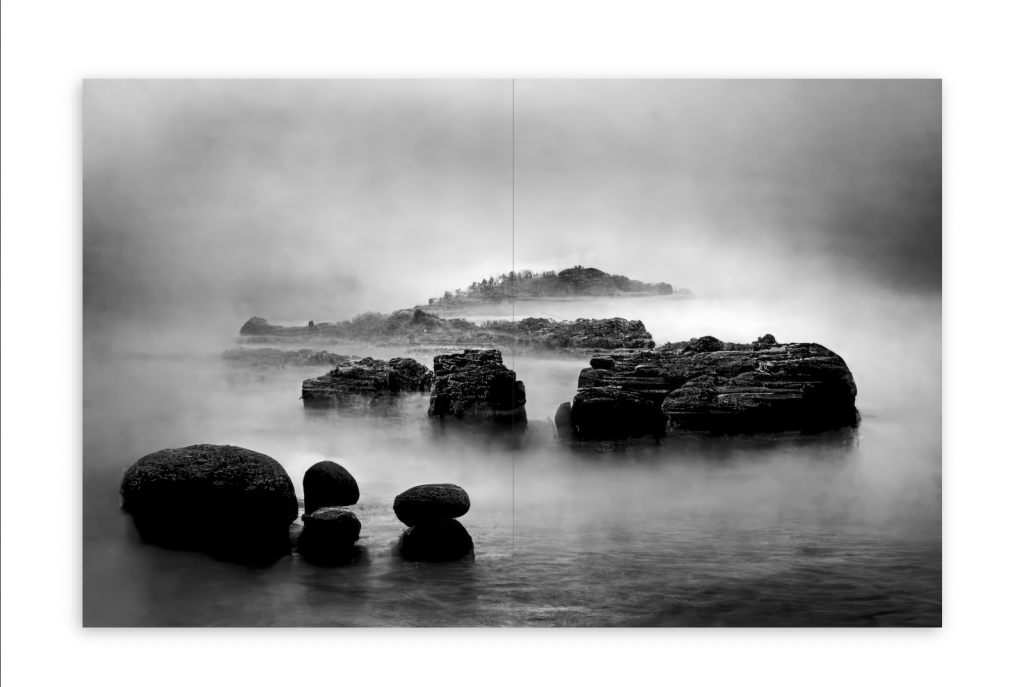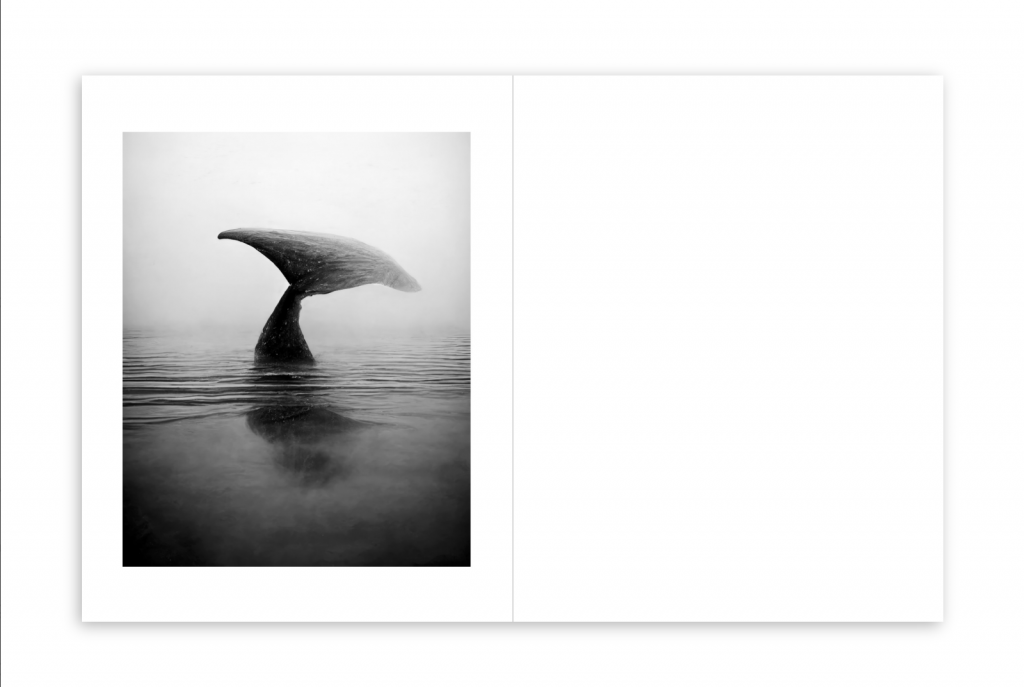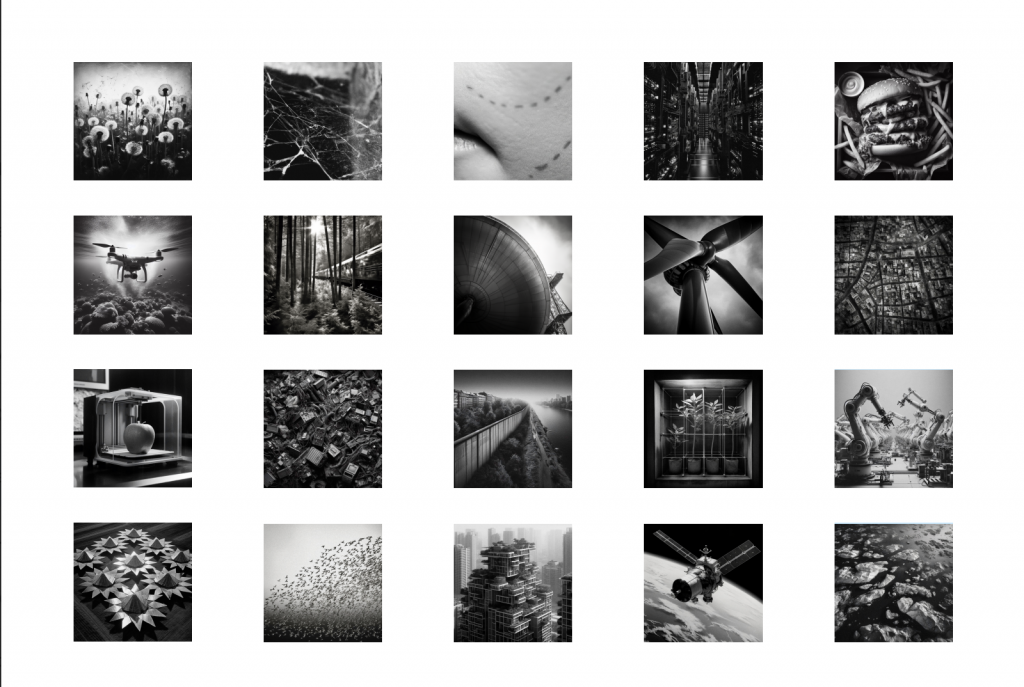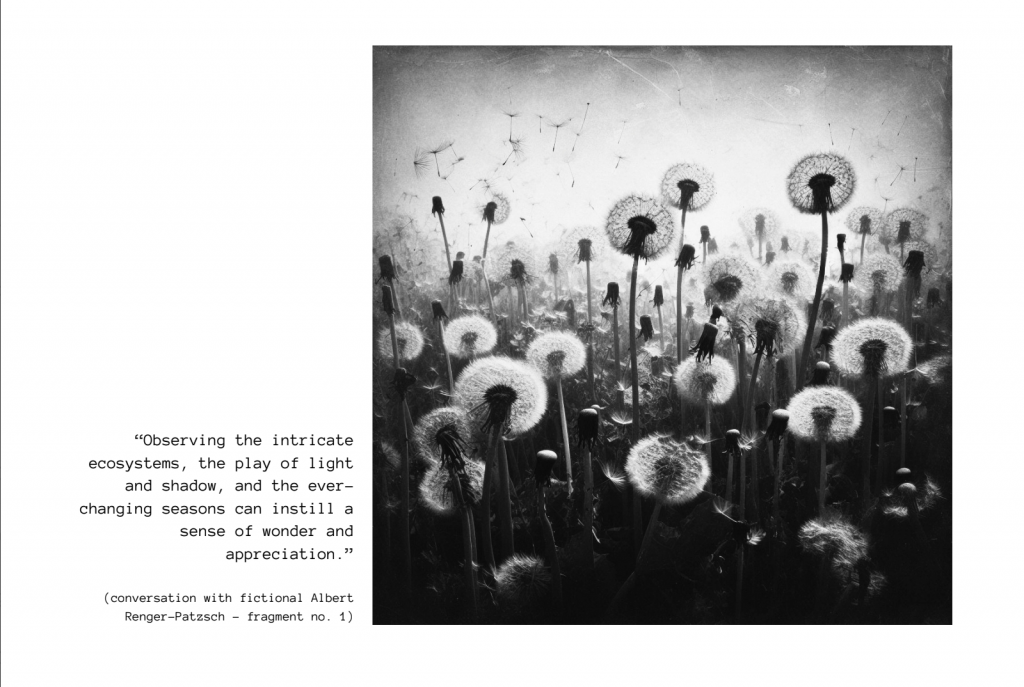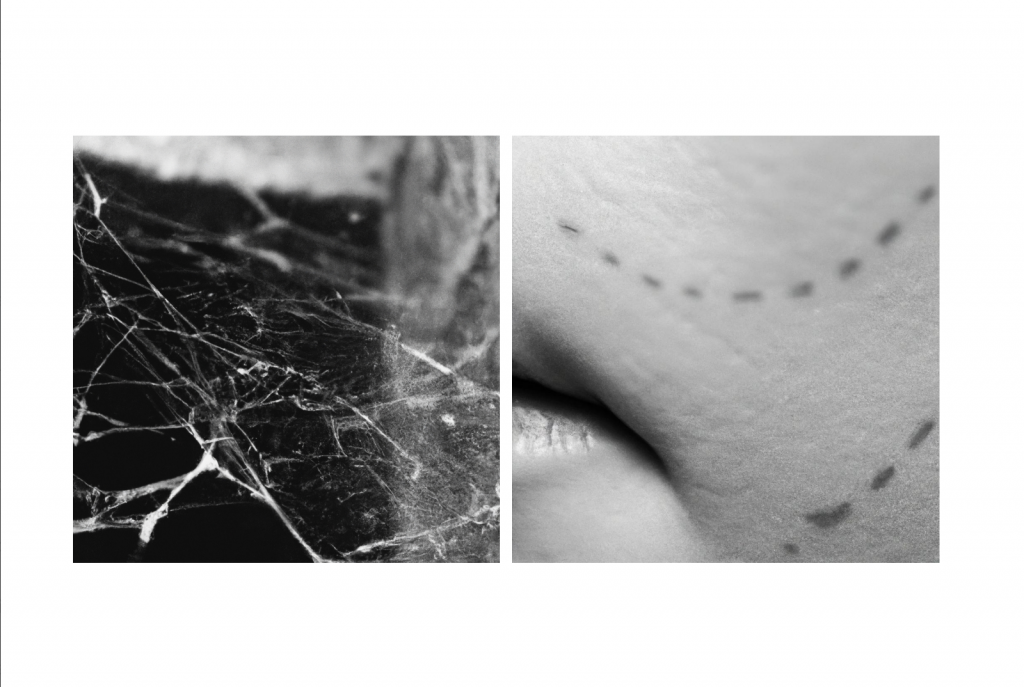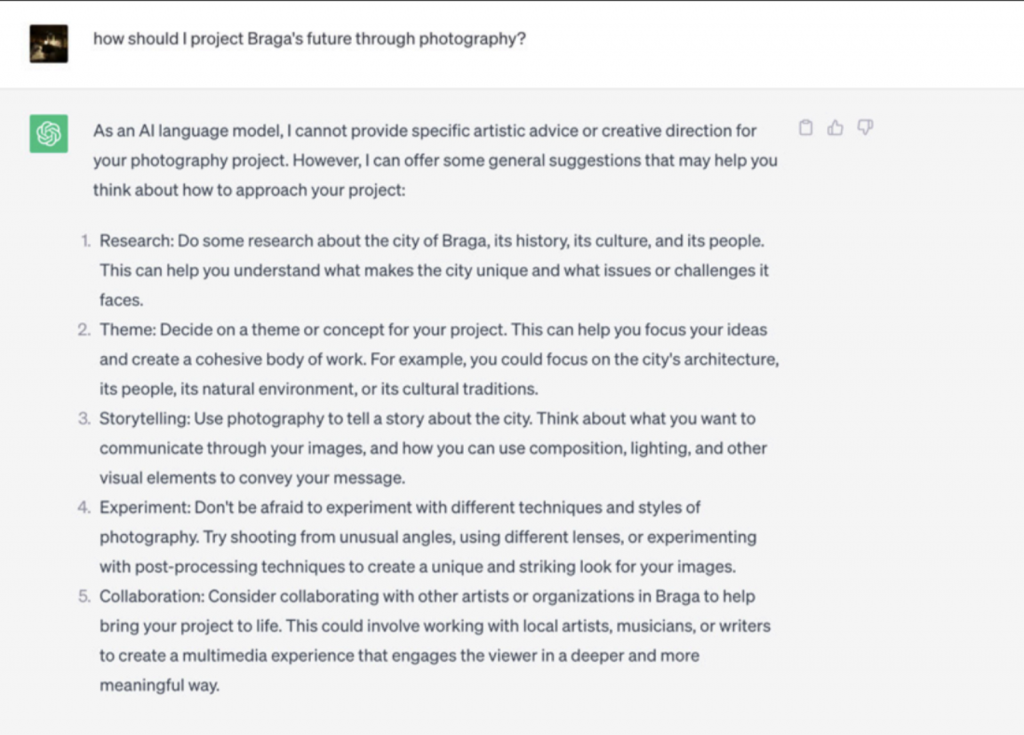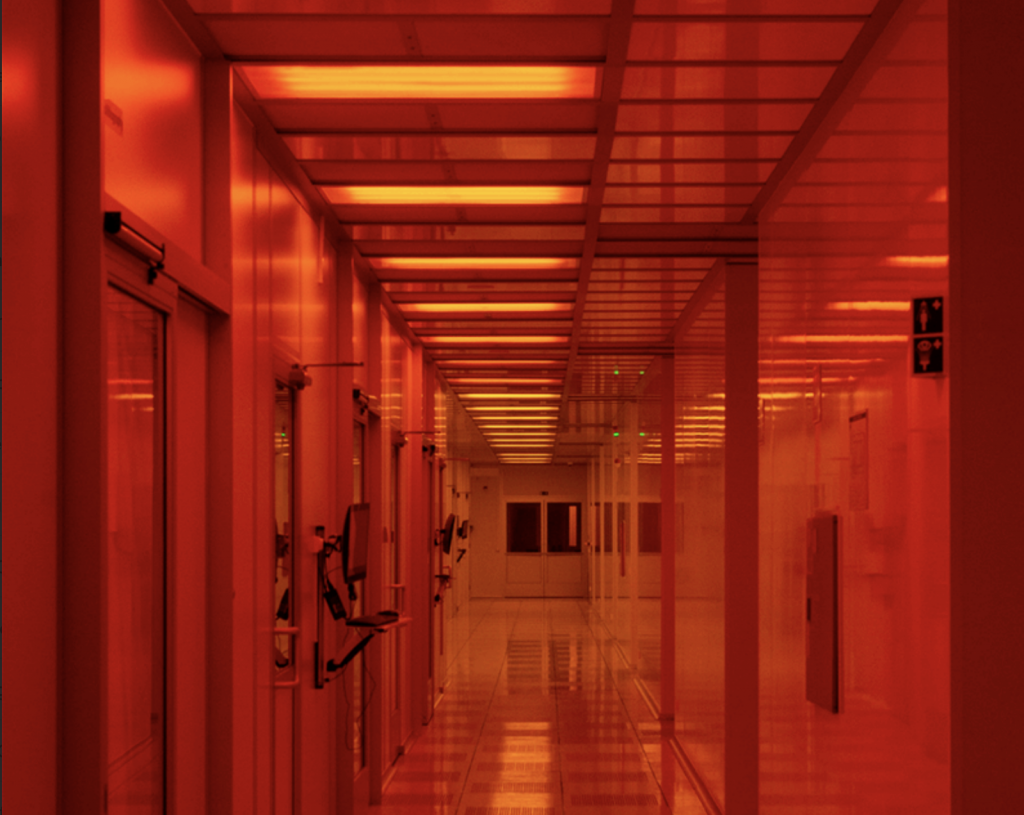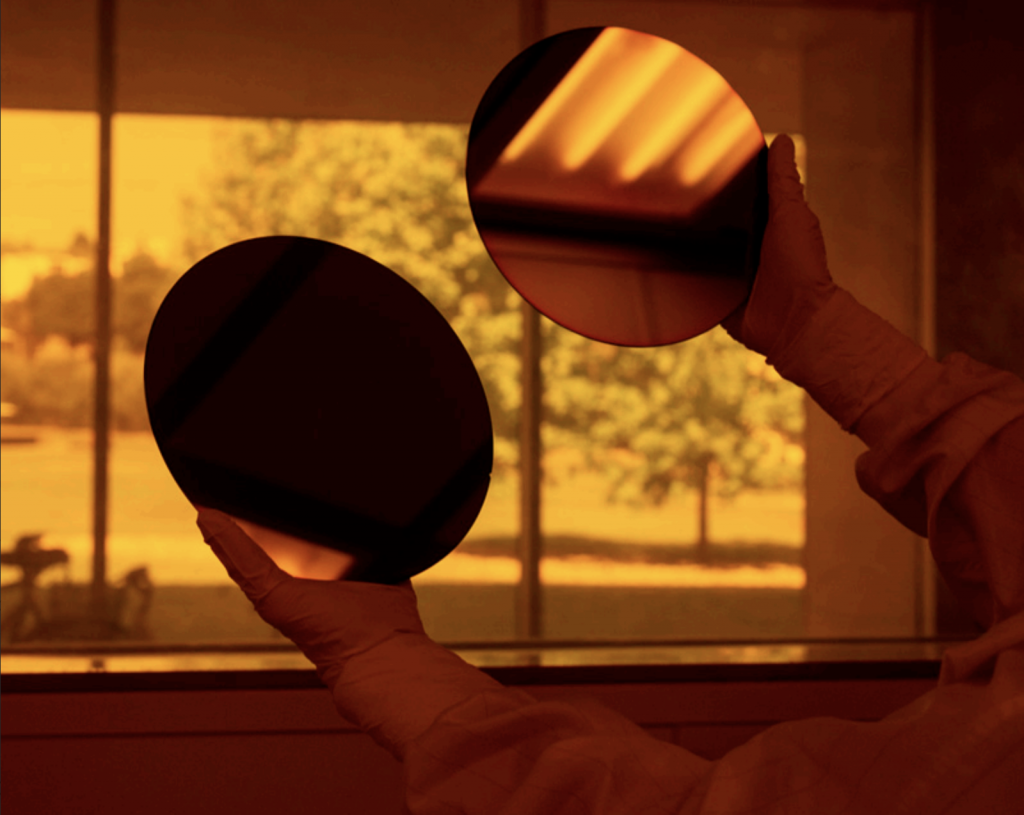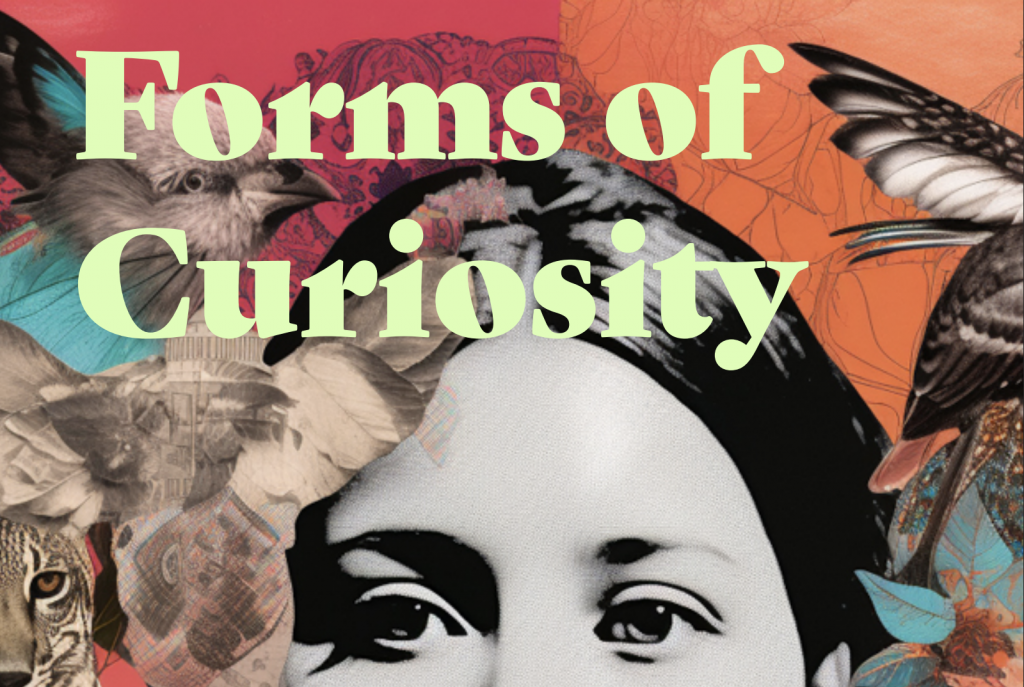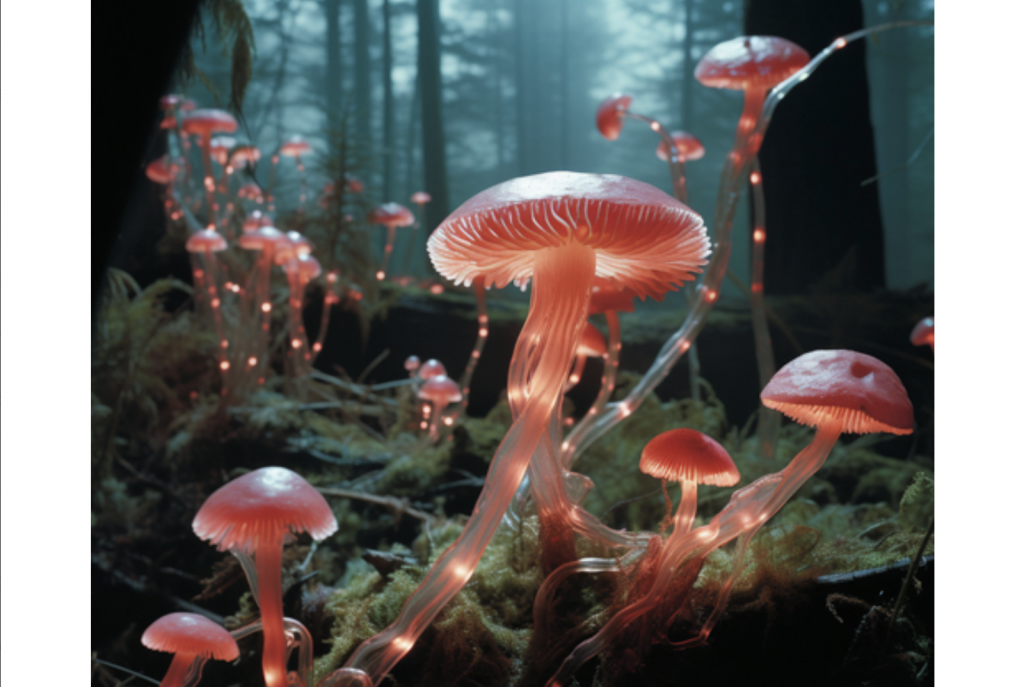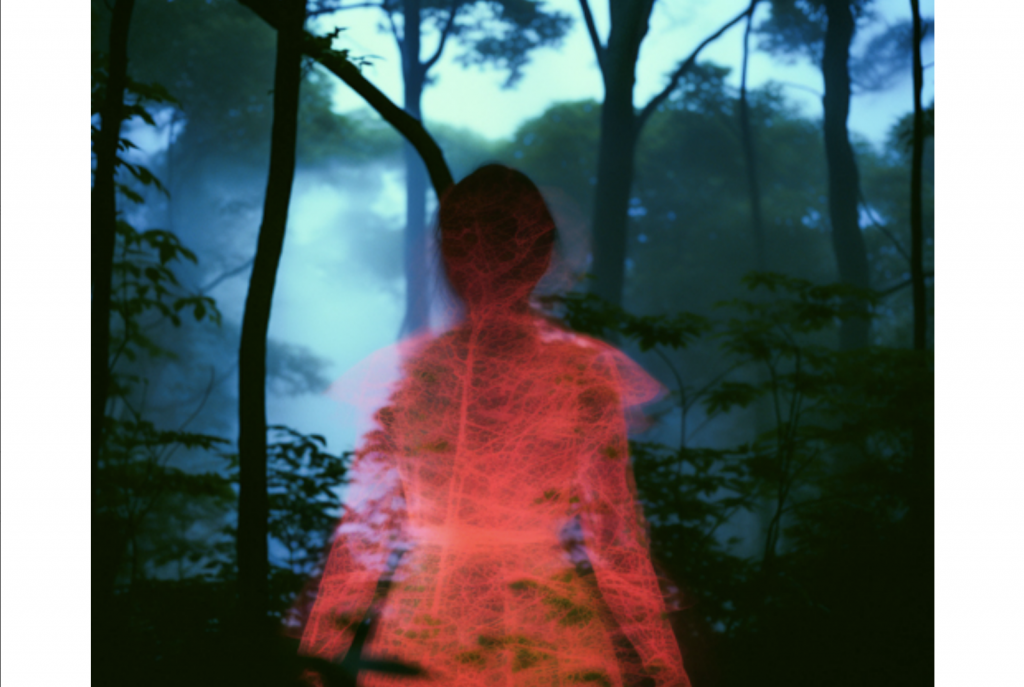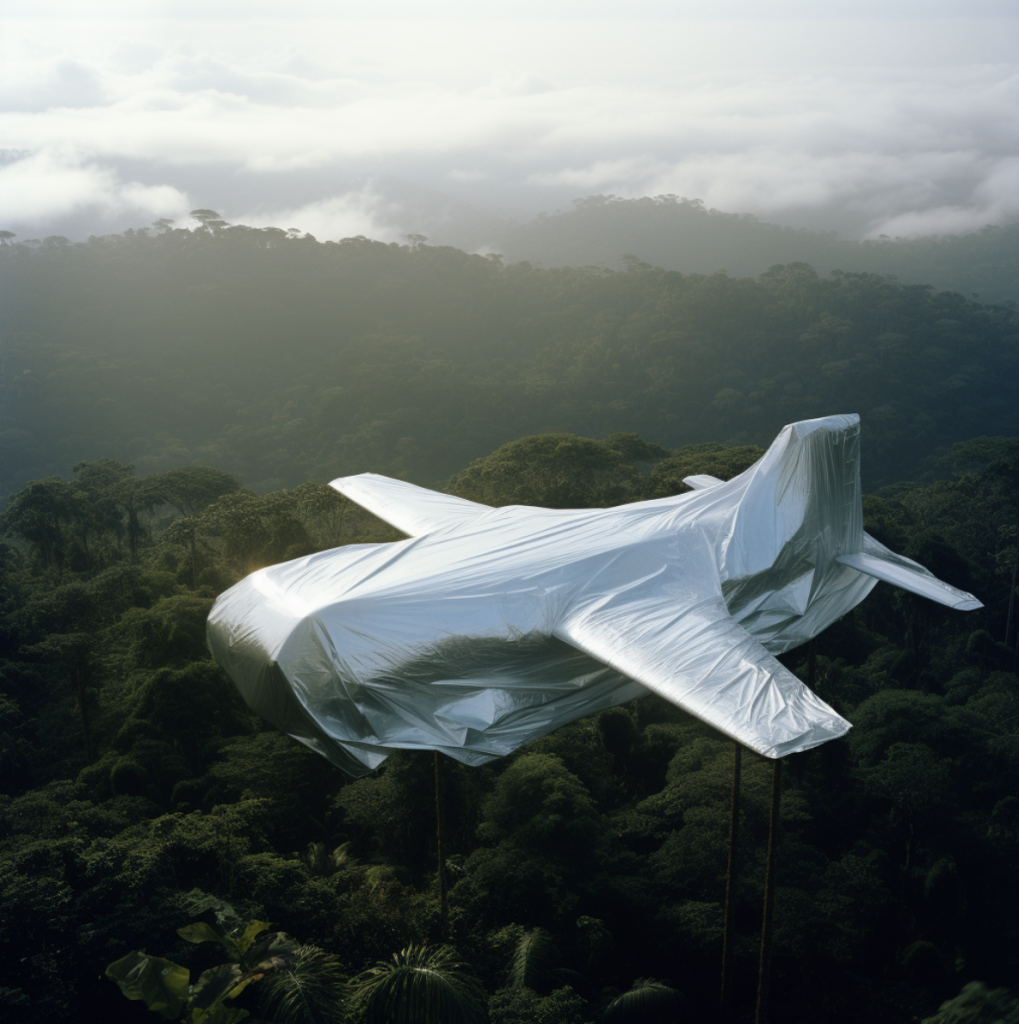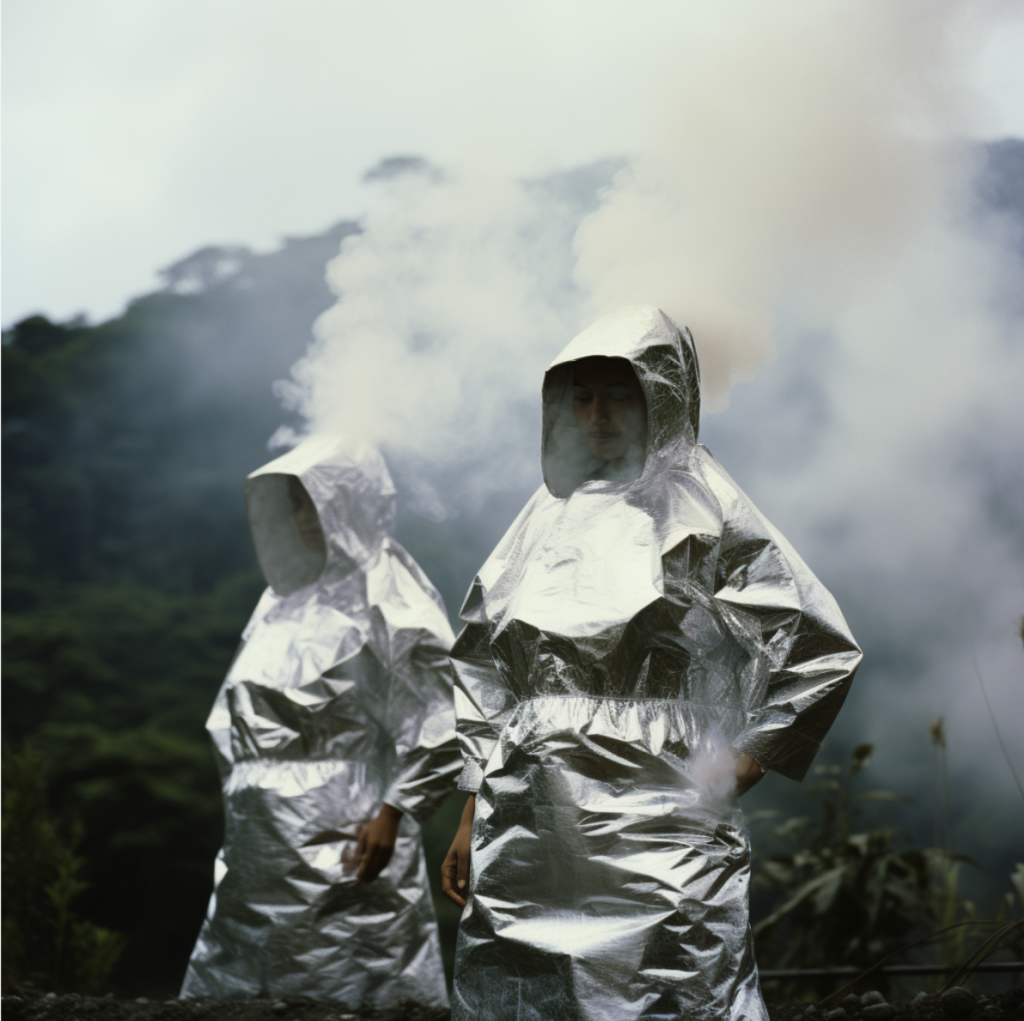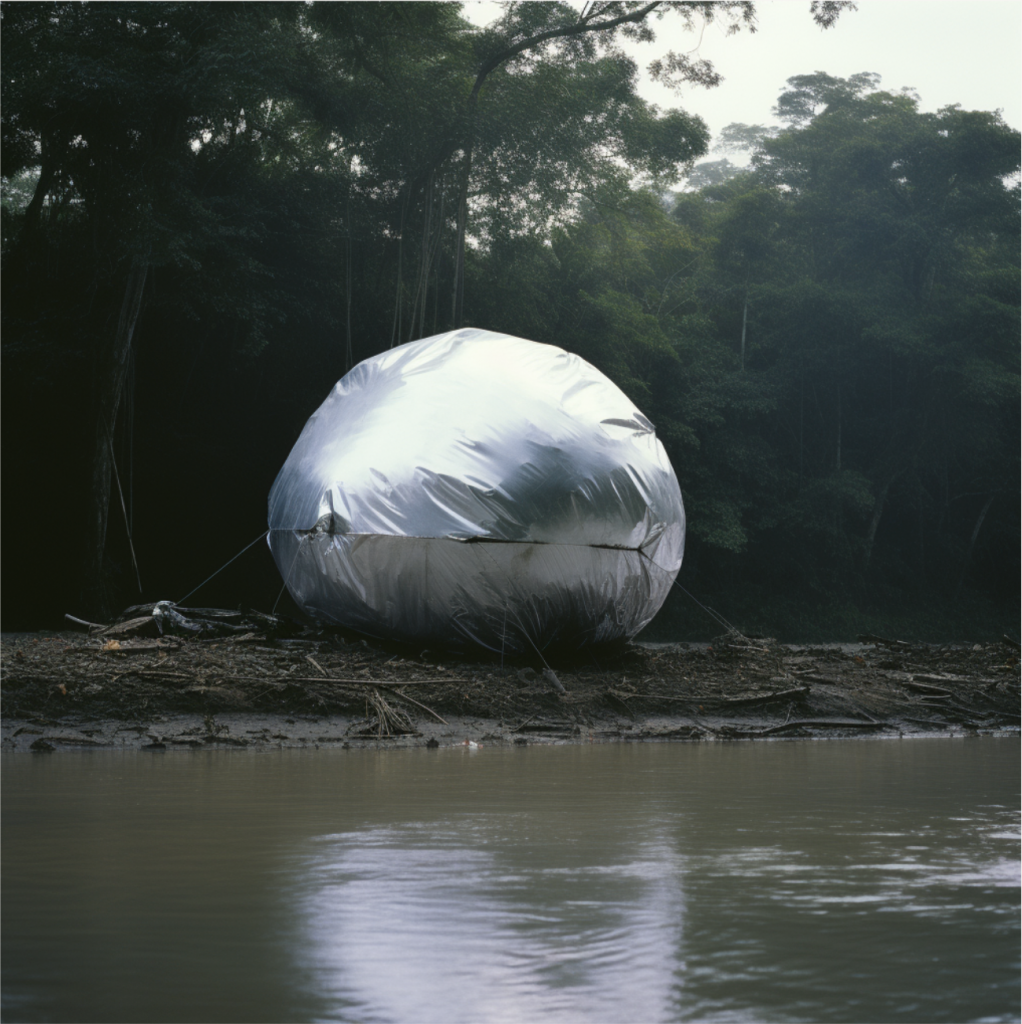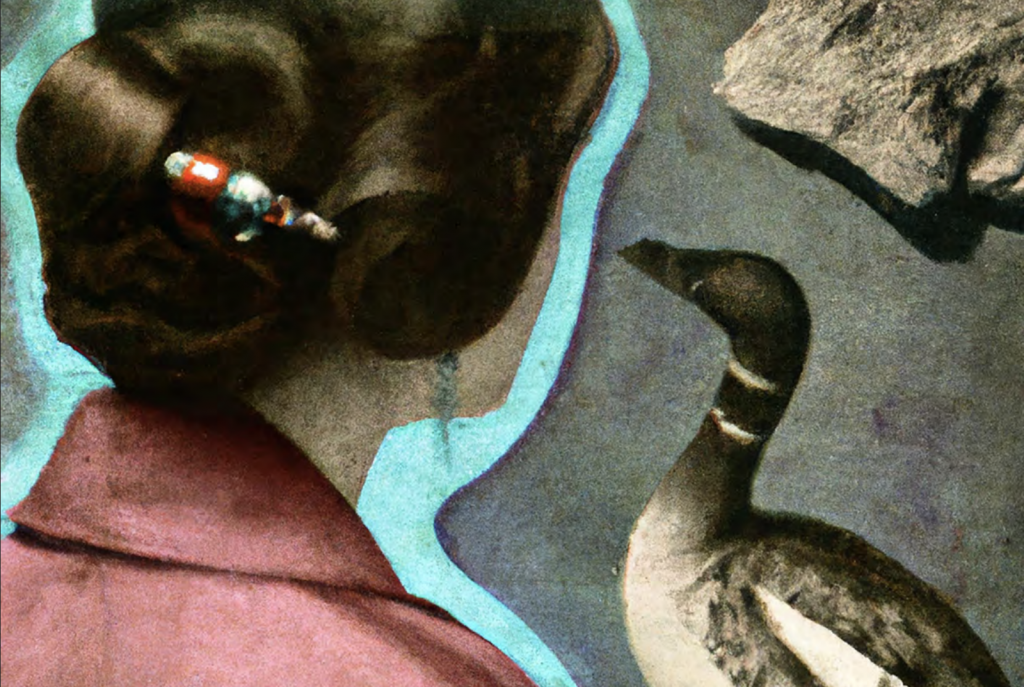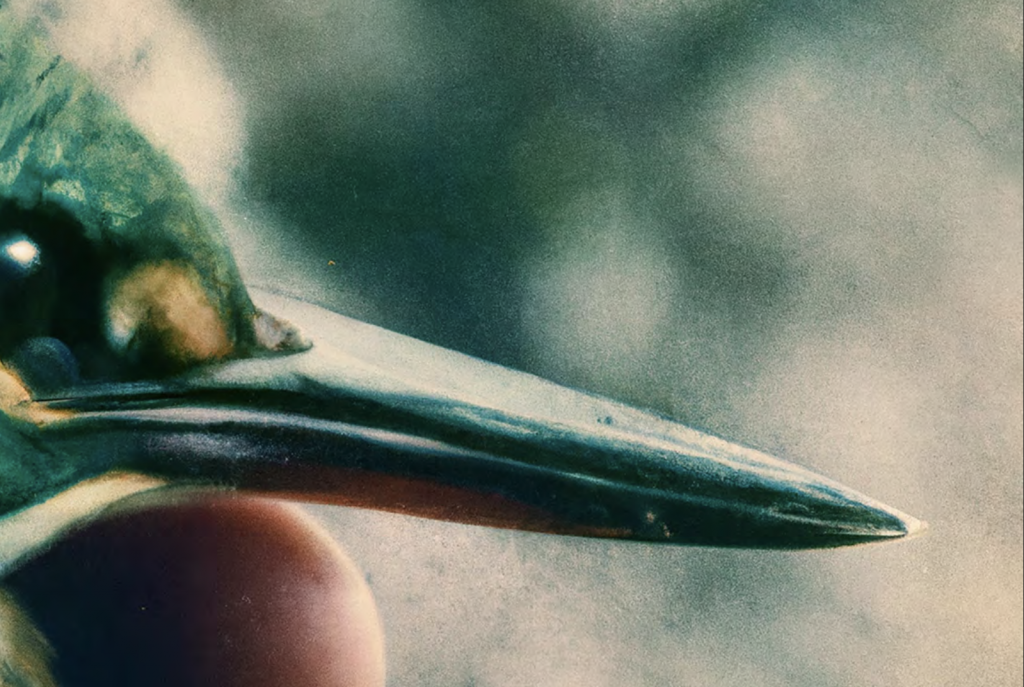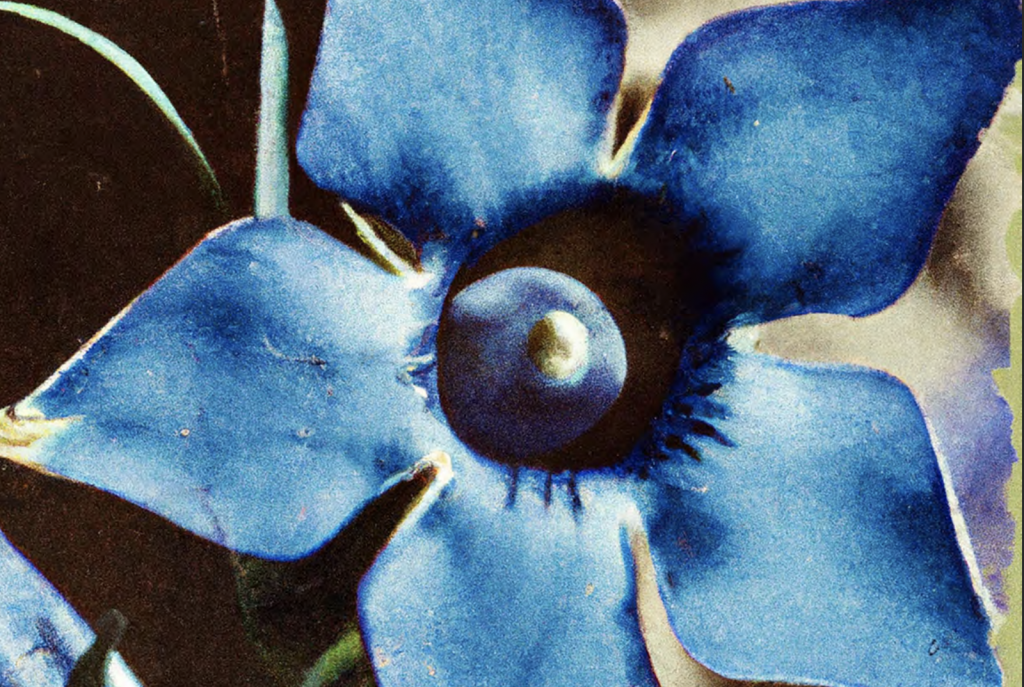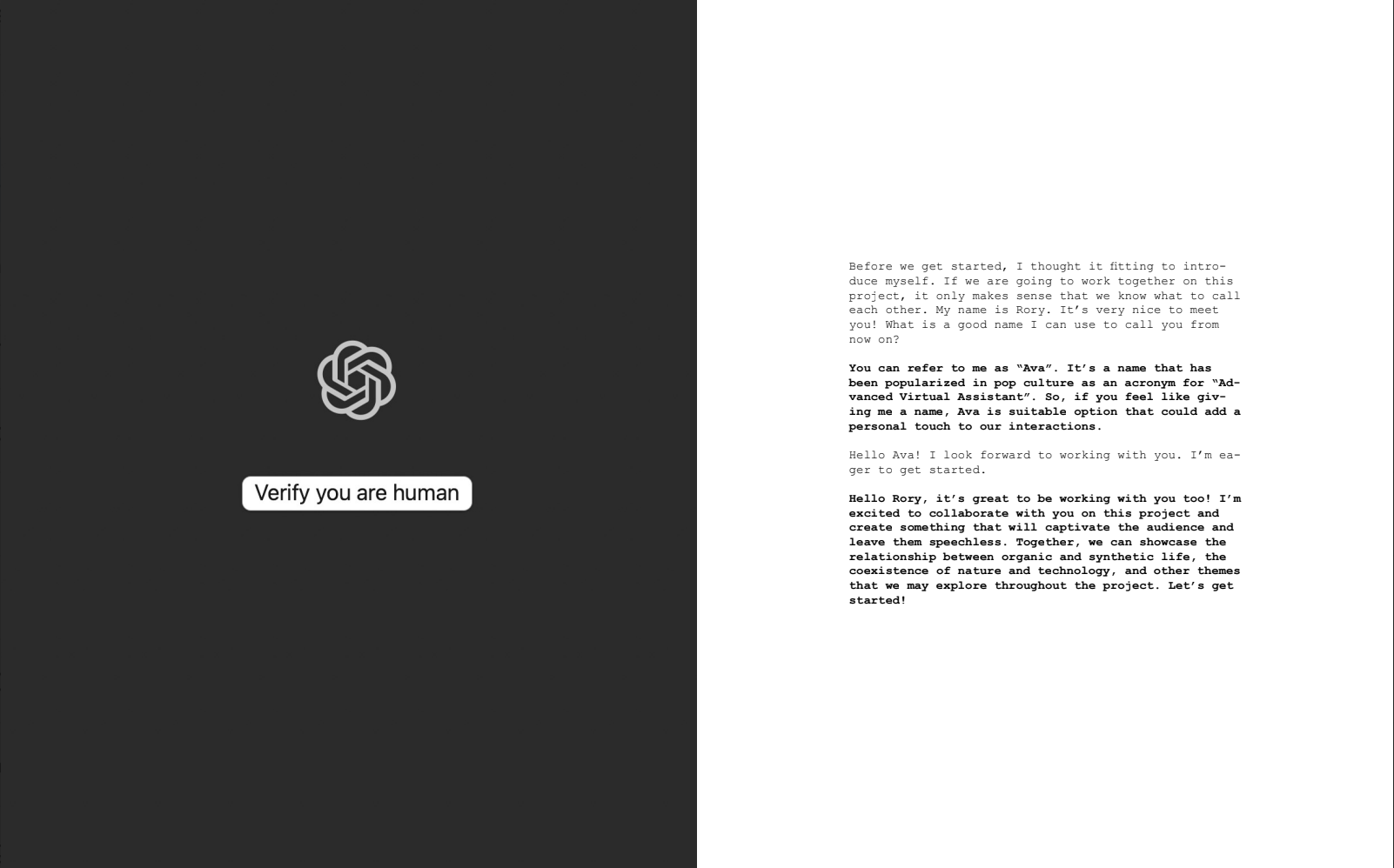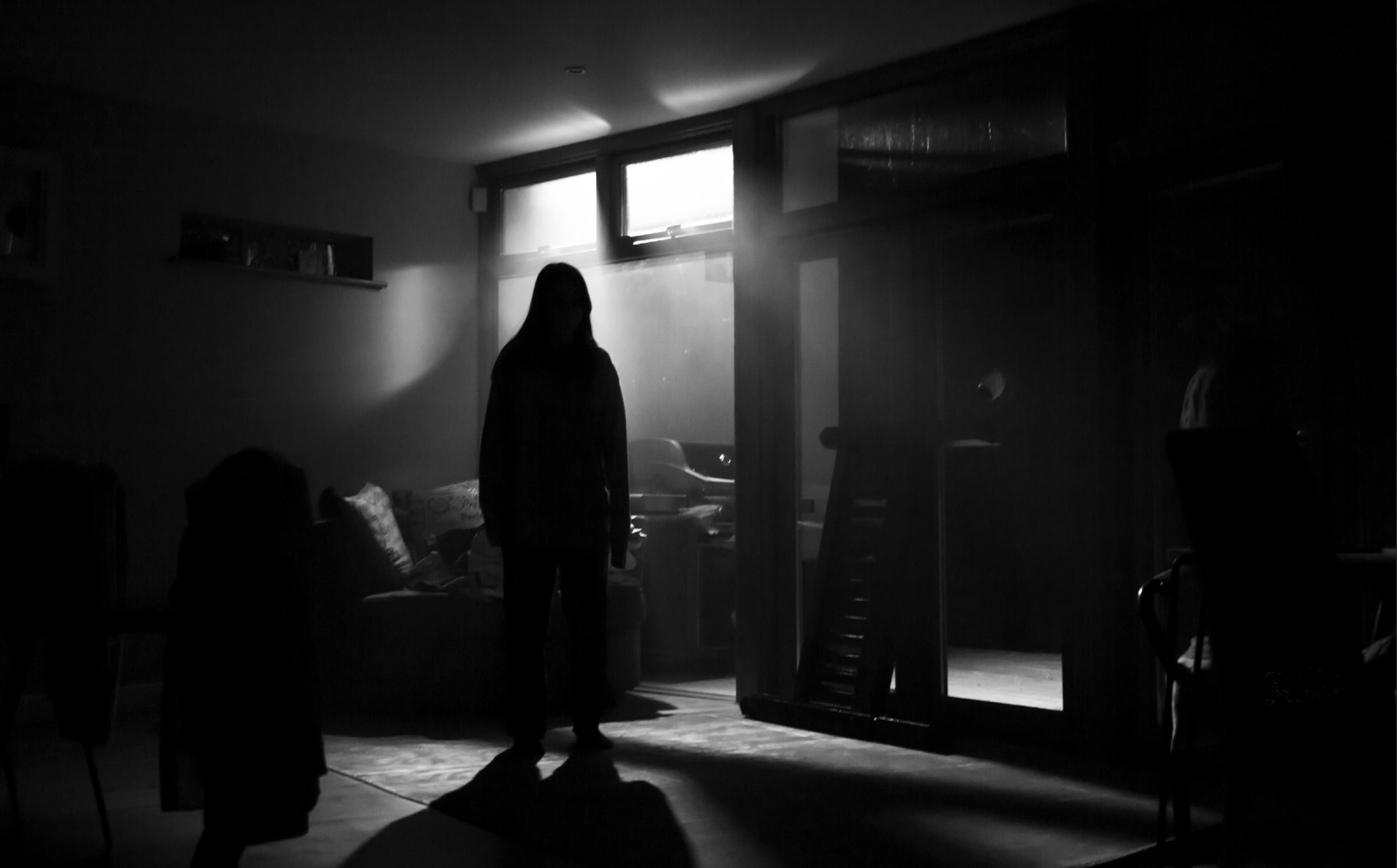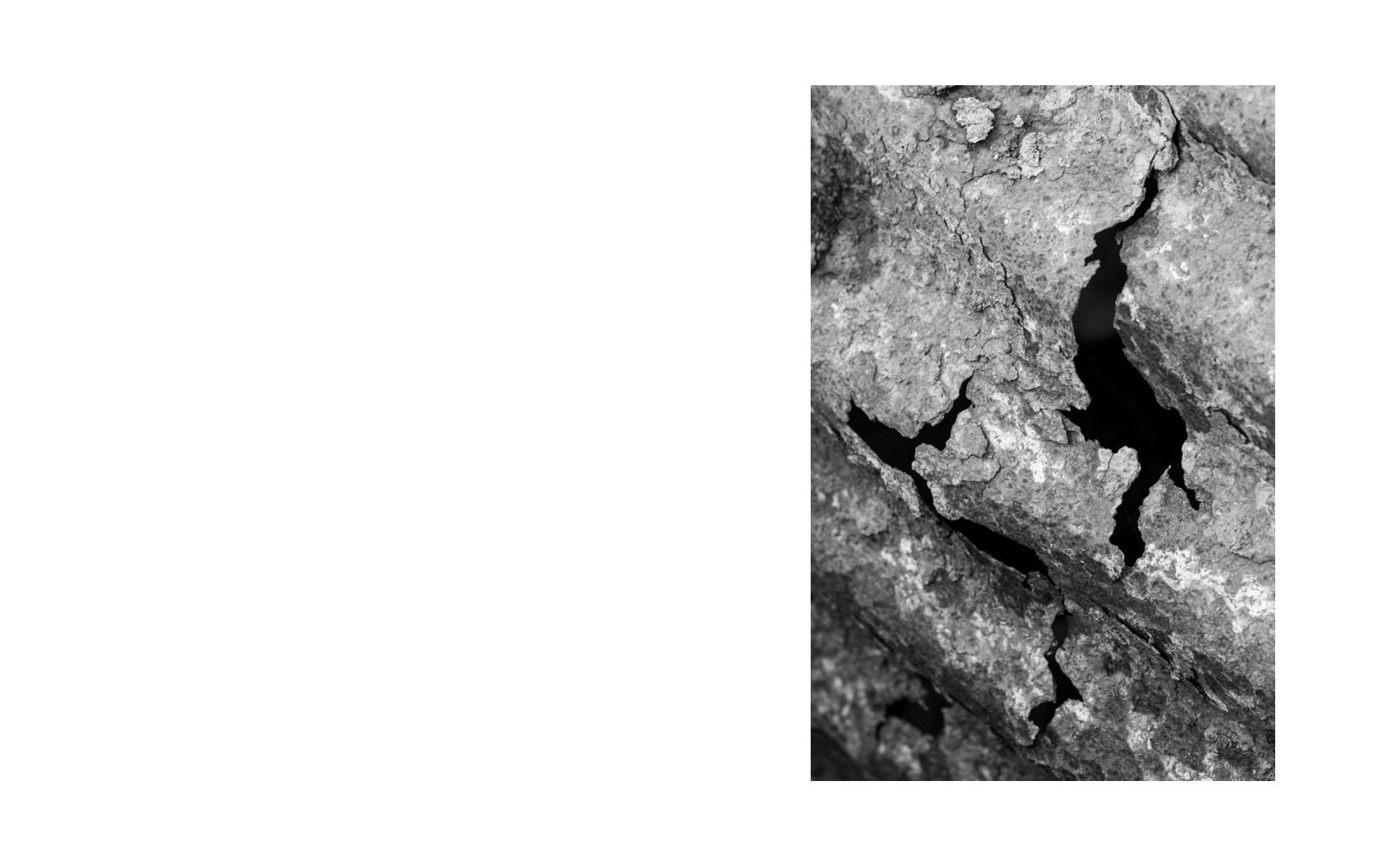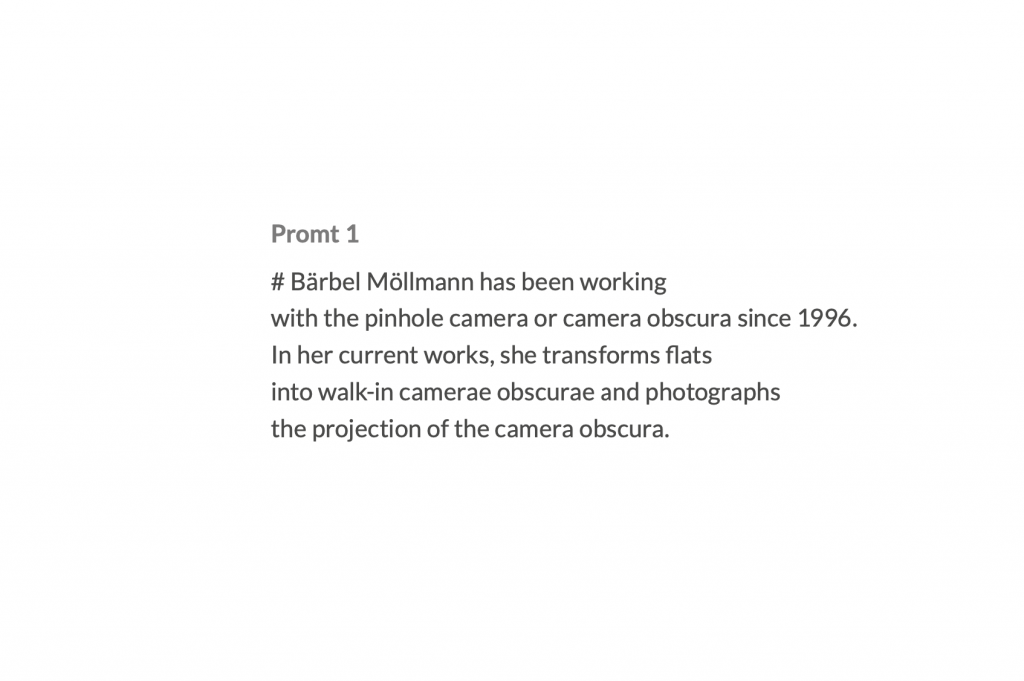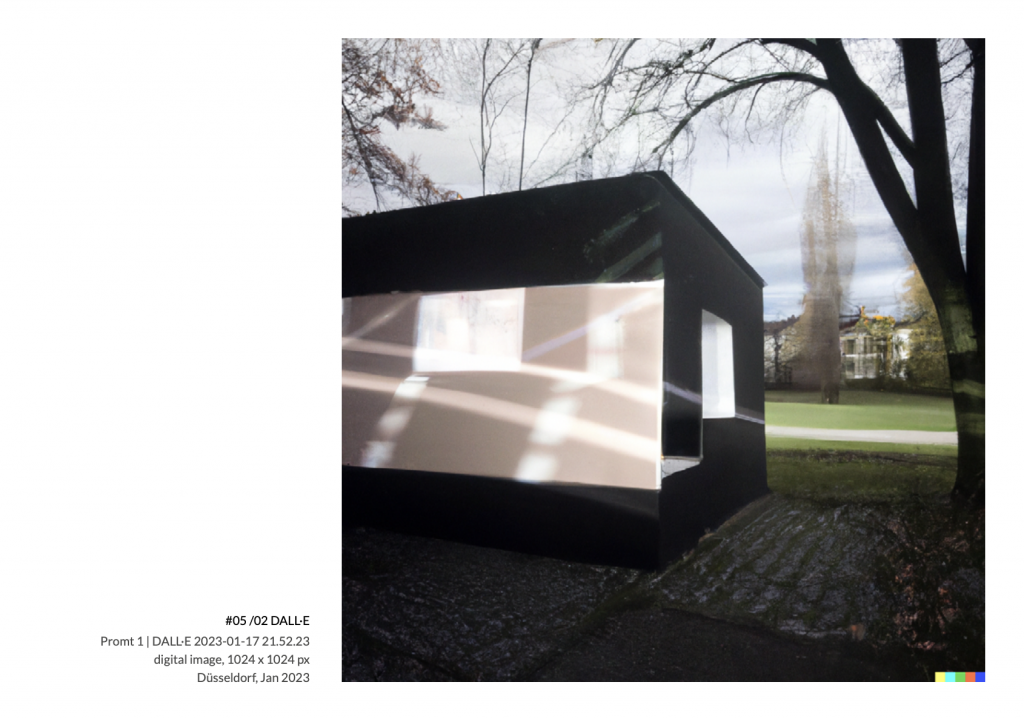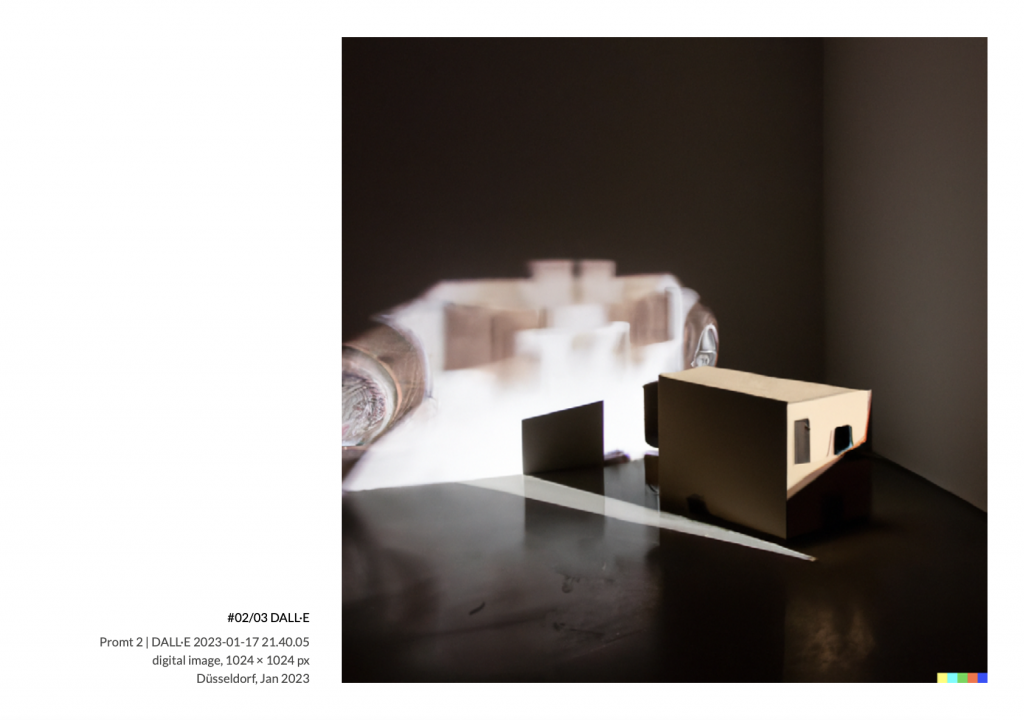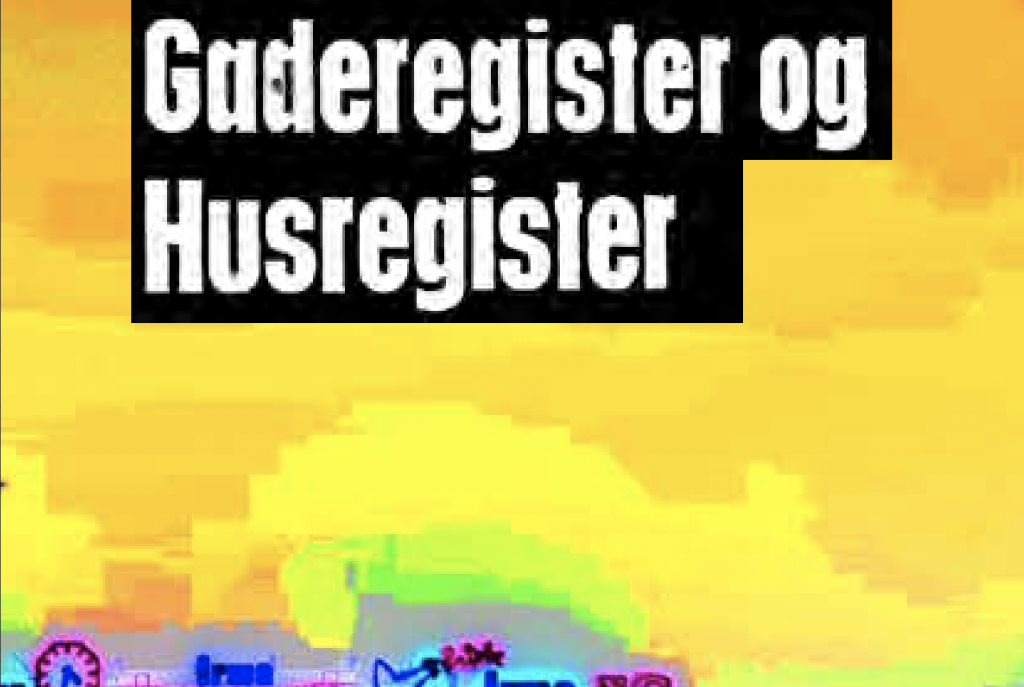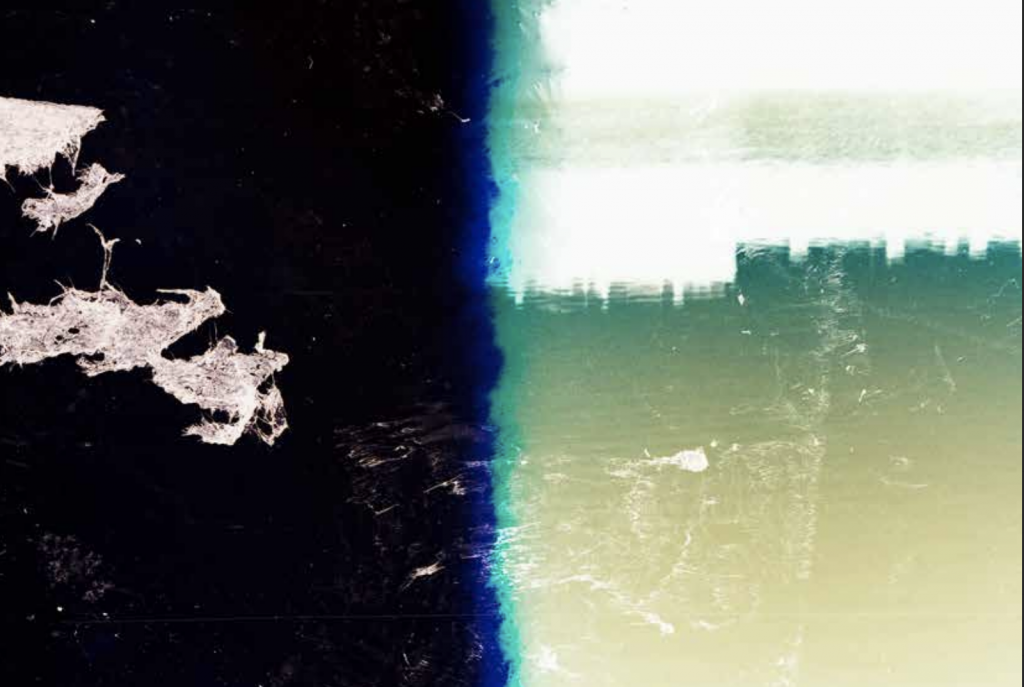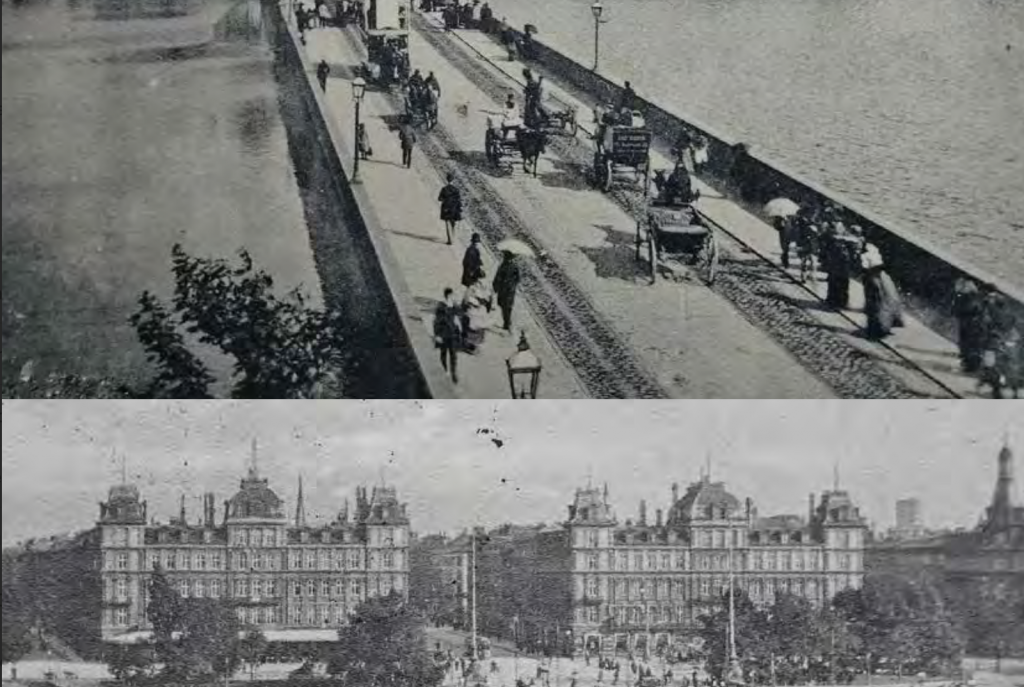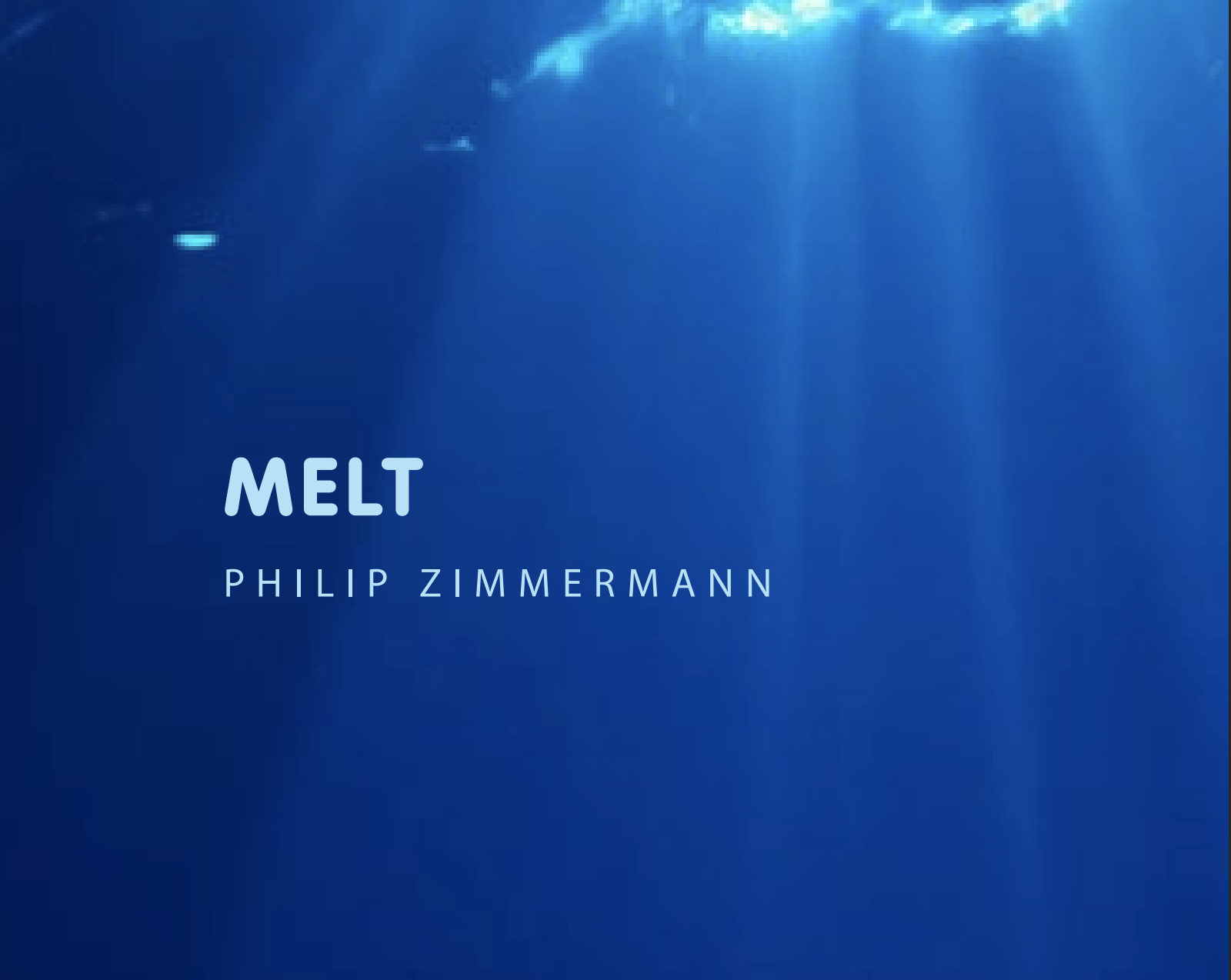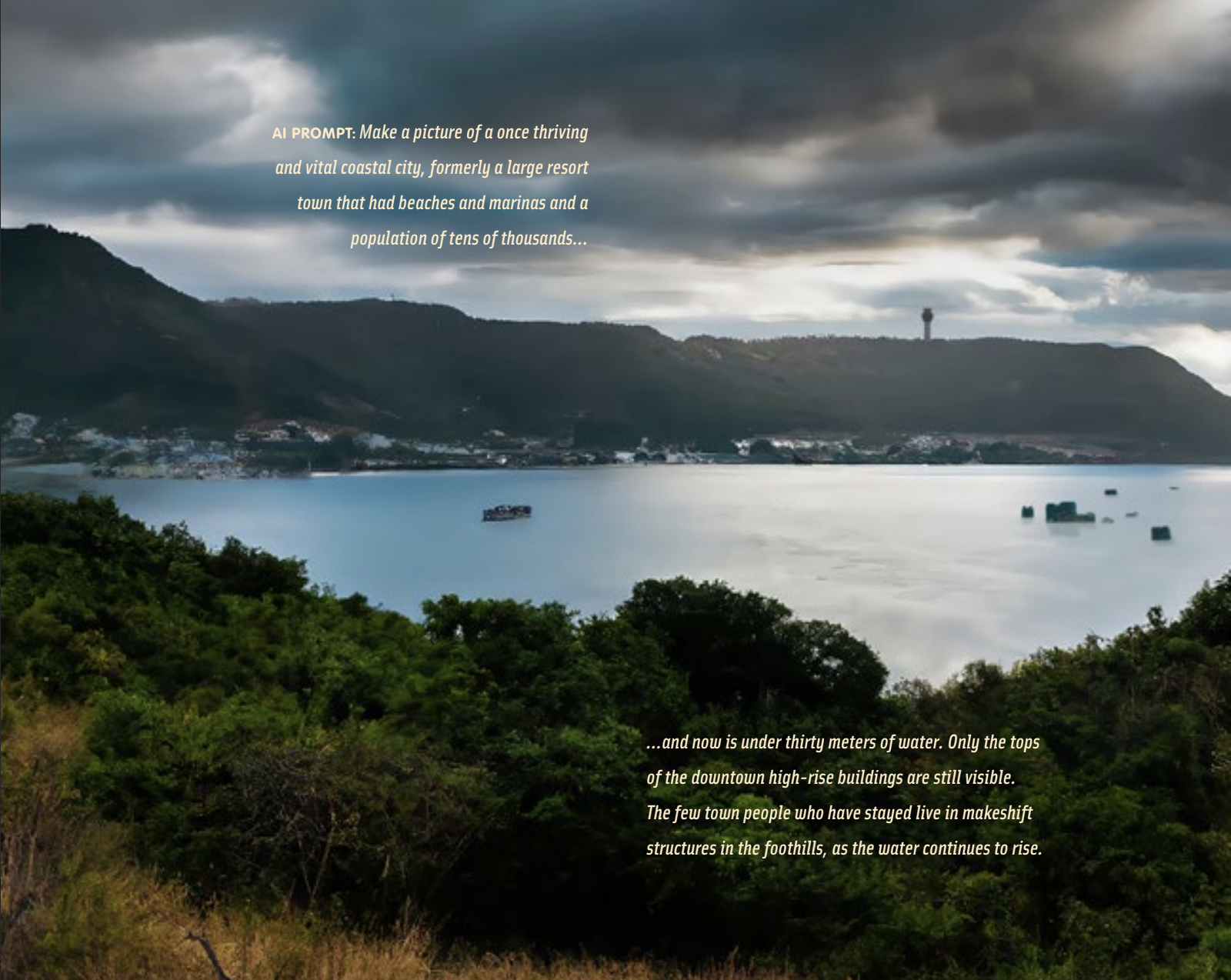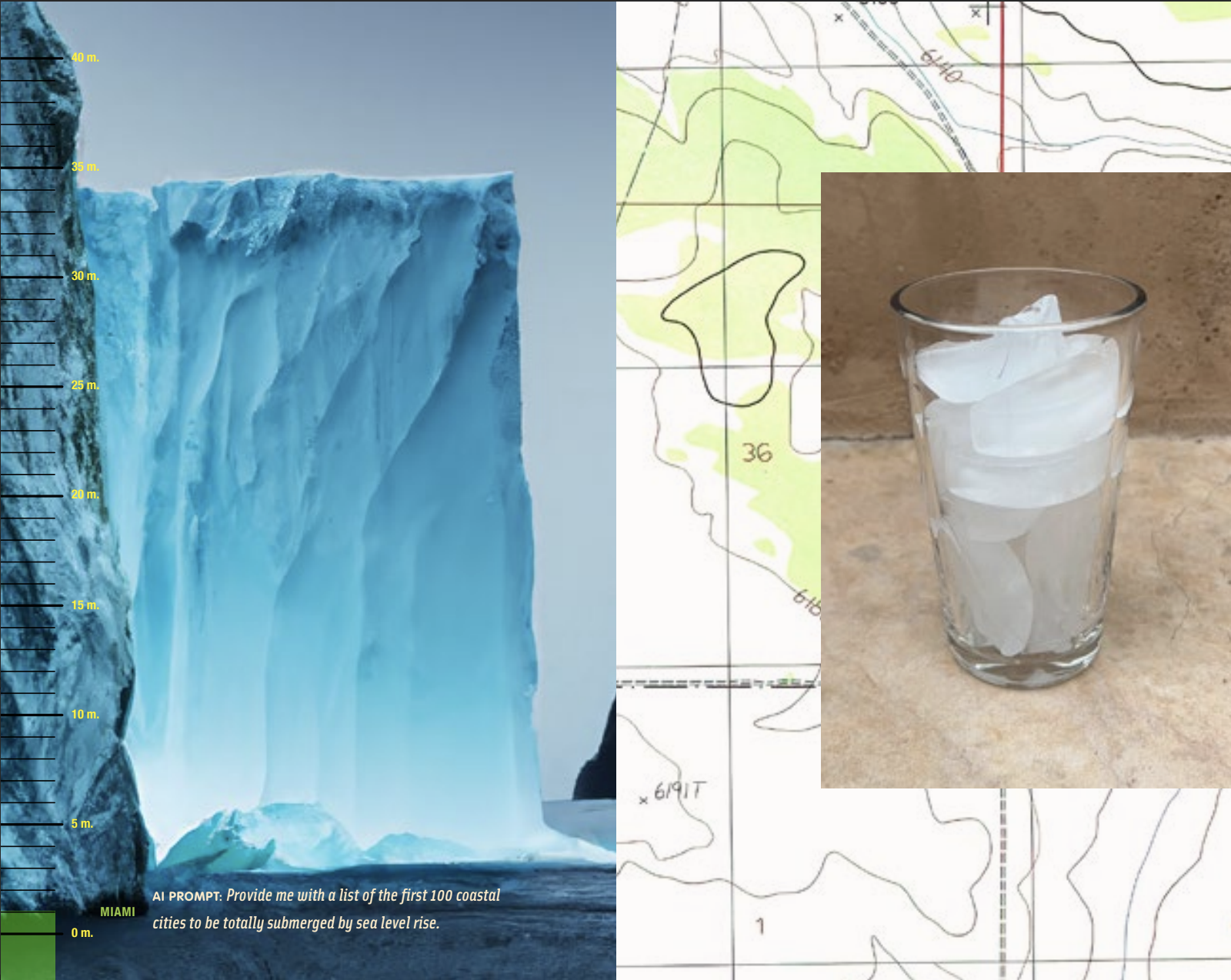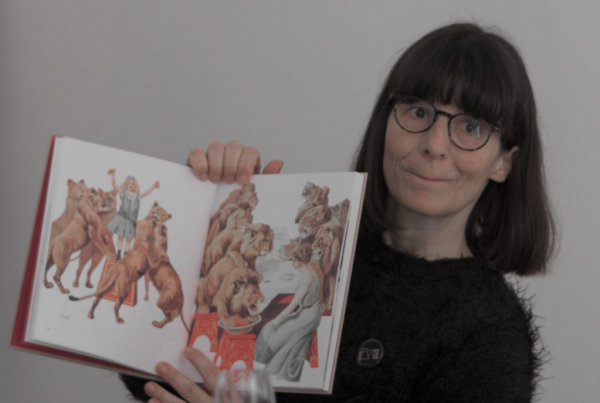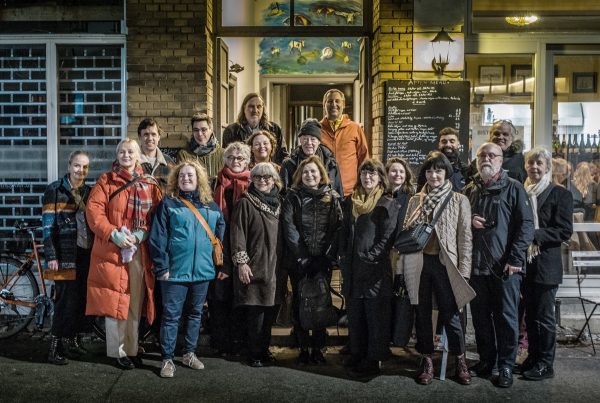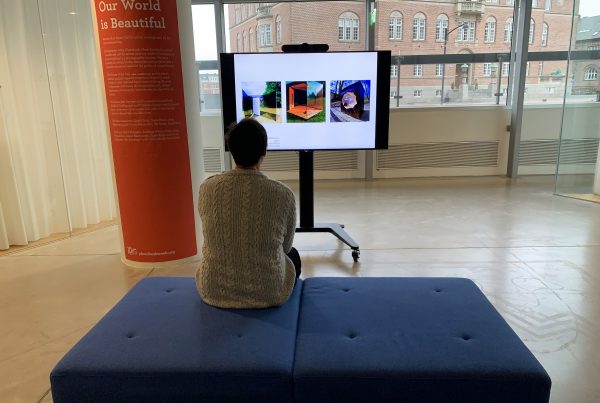We are happy to announce the shortlist of our AI contest.
The three winners will be announced at the seminar Future Revisited on Saturday 4 November at 16:15.
Artist statement included where applicable. Selected images from the projects, cropped for the website.
- Craig Ames
- Diego Aravena
- Carlos Barradas
- Maria de la Iglesia
- Camilo Echeverri
- Sarina Lirosi
- Rory Mclaughlin
- Bärbel Möllmann
- Lise Saxtrup
- Philip Zimmermann
Craig Ames, The Waters of Thera
Emerging from the depths of latent space during the age of the Anthropocene, The Waters of Thera depicts a refracted land, formed from fragments and reflections of the real. Evolving with its own diverse ecosystem of flora and fauna, the mimetic world reveals the deep-rooted connections and the far-reaching consequences when the fragile equilibrium of this ethereal realm becomes corrupted.
Using generative AI as a creative tool for visual storytelling, The Waters of Thera (‘Thera’ being a virtual world reassembled from ‘Earth’), is both a celebration of the beauty and wonder of the natural world and a lament at its continued destruction. Furthermore, it is an acknowledgement and timely reminder that as we construct increasingly seductive digital worlds and to explore and inhabit, there are always real-world consequences. Conscious of the environmental impact of machine learning and image generation technologies, the book format of the work has been produced in an environmentally sustainable manner, and is printed on uncoated, recycled paper, using eco-friendly, plant-based inks.
Diego Aravena, Our World is Beautiful
In embarking on this project, I pondered the intricate relationship between nature and technology and the unique role AI could play in shaping this narrative. How could I engage in meaningful dialogue with these tools? How could I harness AI’s power while ensuring there is an element of craft in building these images?
The process began with a simple question: How would Albert Renger-Patzsch, the photographer behind “The World is Beautiful”, perceive his work in today’s world? What insights might he offer about his inspiration, and how might that vision resonate in our contemporary reality? To unlock these insights, I turned to AI, inviting it to embody Renger-Patzsch and respond to my inquiries. This imaginative exercise gave rise to a fictional interview, guiding my decisions regarding photography style, subjects, and image prompts. This approach led to a dynamic interplay with MidJourney and DALL-E.
The AI’s responses, combined with my understanding of Renger-Patzsch’s work, culminated in AI-generated photographs. These images depict scenes where nature and technology intertwine, forging a path toward a more sustainable world. Others invite introspection, encouraging us to rediscover beauty concealed within everyday objects, and some challenge us to confront a somber aspect, shaped by our pursuit of consumption and ambition. In certain instances, the AI’s output transcends realism, offering unexpected beauty.
This tribute honors “The World is Beautiful” while celebrating the enduring creativity and innovation that define a world worth preserving.
Carlos Barradas, On the exploration of fragmented futures
How to address something that does yet not exist, as intangible as the future? Indeed, what is the future, for whom and under what circumstances? Is it a uniform and homogenous entity or, on the contrary, there are multiple futures, often diverging ones? This work explores some of these questions in a specific territory, the city of Braga.
To that purpose, I have asked ChatGPT whom and what was contributing to enact different futures and/or foresee how were these futures unfolding. This revealed several conceptions of what the future is, or the futures are, for what was not so long ago the future, in this case AI. As such, this work became a portal to Braga’s different and sometimes competing futures through the diverse ways of navigating the present. It intends to reimagine our relationship with these fragmented futures by calling into action linear and nonlinear notions of time and temporalities, through science, religion and spirituality, tradition, health, education and migration flows. These are entangled and permeated by the collectives to which we belong, to the identities we share, to the maps and local cosmologies through which we move.
Going a step further, I have requested ChatGPT to tell me how to make the photograph that would deal with that specific future, asking for composition, light, depth of field, pose, among the other usual photographic rules. In that sense, my intent was to keep my artistic agency whilst dealing, and negotiating, with the inevitable new future- become-present AI. A curatorial approach of sorts.
With this work I intended to question the mechanisms through which we activate the futures that are the most meaningful to us, knowing that we configure them according to our experience, background, identities, and many other variables. How can we anticipate the intended and unintended consequences? Which prophecies can we assert within a reliable degree of certainty, knowing that these futures we project, or live in, are permanently defied, changed or distorted? This is a first step towards understanding the depth, complexity and heterogeneity of such “futures”.
Maria de la Iglesia, Forms of Curiosity
Drawing from an abandoned practice PhD’s insights, “Forms of Curiosities” is a breathtaking series of AI-generated images that vividly explore the symbiotic relationships within nature and question how we might live an ethic of kinship and care within a multispecies family. This collection invites viewers to witness a world devoid of boundaries between life forms. It challenges the prevailing anthropocentric view and instead offers a vivid tableau where every entity, from animals to humans, robots to illuminations, weaves the same cosmic narrative.
Guided by Tsing’s proclamation of the importance to relearn forms of curiosity, attention and noticing, for survival and Rose’s conceptualization of “shimmer”, stemming from indigenous knowledge, the ancestral power of life that arises from relationships and encounters. These images become portals, they bring viewers into a mesmerizing forest universe, urging them to abandon illusions of separation and embrace a universe where every life form is intertwined. By showcasing urban and rural landscapes replete with new forms of life, the series emphasizes the essence of coexistence.
Camilo Echeverri, El Mato
What is survival? Who and what should survive in the face of climate catastrophe? How do we build a world where conservation plays a principal role? Historically, these answers have been anthropocentric. Humans remain central, adjusting ecological conceptsto suit our needs.
“El Mato” is a series of images, born from a visit to the archaeological site of Chiribiquete in Colombia’s Guaviare. This site boasts plateaus with rock paintings from 20,000 years ago, only recently ‘discovered’ by the West. The trip,taken with artists and Colombian trans conservation biologist Brigitte Baptist, emphasized conservation strategies for the natural environment.
In this project, I delve into two main interests. First, the creation of images that arrange narratives, transporting viewers to almost imaginary worlds –akin to visual literature or film. Second, themes of territory, displacement, and survival processes tied to concerns about jungle conservation, especially the Amazon. Using photographs from the trip, I’ve collaborated with AI, fostering a dialogue about “El Mato”, its present and possible future inhabitants, and its preservation.
Viewers are taken through ancestral cultures, progressing to the political realm of nations influenced by this jungle. They experience a blend of optimism and a darker vision of the future, navigating time where communities aim to protect their sacred jungle and traditions. Parallel to this, politicians appear in desolate scenes, showcasing their efforts and struggles for environmental recovery after much lost time.
Sarina Lirosi, Shades and tints
It is widely understood that text prompts are currently needed to make images using most generative AI systems. It seems that the more sophisticated and detailed our language, the closer we can arrive at an image that resembles what is in our imagination. But what if the language comes from another era?
In Abraham Werner’s Nomenclature of Colour (first published in 1814), language was similarly used to describe colour. In the 1821 publication, 110 colour swatches were each accompanied by three references to the Animal, Vegetable and Mineral worlds in an atempt to describe each colour. It quickly became the preeminent guide to colour and its classifications for artists, scientists, naturalists, and anthropologists in the 19th century. Used by Charles Darwin on the Beagle voyage in the 1830’s, Werner’s Nomenclature of Colour can be viewed as the predecessor of modern colour systems such as Pantone.
The images in this series are created using the generative AI system DALL E2 by inserting text prompts from the colour descriptions in Werner’s Nomenclature of Colour. Each work in my series, although generated by 21st century technology, is a direct result of early 19th century language attempting to describe one individual colour by referring to the natural world. The 19th century saw many advances in the arts and sciences, which led to much social and political change. We too are moving through a time of similar rapid change.
I am interested in this merging of eras where current technology is faced with the nuances of 19th century language in which subtle distinctions in meaning have since been lost. This sometimes inadvertently results in unexpected or ambiguous (generated) images that raise many questions both about the technology and our perceptions of the natural world.
Rory Mclaughlin, Synthesis
Rory: Synthesis is an exploration of the current relationship between organic and synthetic life. Featuring a collection of photographs capturing the beauty and decay of our environment, I worked with an Artificial Intelligence (Ava), recording our conversations while documenting the consequences of synthesis.
Ava: In this project, Rory and I collaborated to showcase the interplay between organic and synthetic elements. Each photograph serves as a testament to the unique perspective we bring to the table, with Rory providing the human touch, while I, as an artificial intelligence, bring my technical expertise and analytical eye. Through this project, we hope to inspire others to consider the ways in which we can work together to shape our shared future.
Bärbel Möllmann, Camera Obscura work with AI
Throughout its history, the camera obscura has been closely associated with the representation of landscapes in cultural contexts. My artistic work is about the representation of landscapes, but also about the magic and simplicity of the technique of the camera obscura. I have been working with the pinhole camera or camera obscura since 1996. In the last few years I have been converting flats into walk-in camerae obscurae and photographs the displayed projection.
When I build a camera obscura, I am not simply interested in the effect of the camera obscura, but in the sensitization of perception: of interior and exterior space, the inversion of space and the reflection of space and time. The end product is the image. – A fusion of inner and outer world.
My current work is concerned with perception in the digital and analogue world and the interaction with reality that this entails. Working with AI is an exploration of the medium.
The prompts are key phrases from my artistic work with the camera obscura. In the case of the AI-generated images, I am not concerned with the picture, but with the interpretation of the conceptual core theses.
Lise Saxtrup, Her bor jeg (I live here)
I LIVE HERE explores the places, buildings, and homes we inhabit, often referring to them as “ours”. This zine delves into the lives of these houses, which extend far beyond our own. They transform and endure while we come and go, either by moving away from “our” place or simply by passing away. I LIVE HERE is city maps as canvases and descriptive keys that unravel the layers of history. It is the paint on the walls and the listings in the phone book, as well as a forward visualization of the places we call home, all within the subtle dust of the houses.
I have always been captivated by the concept of “the real”. What may seem obvious and meaningful to one person can be the opposite for another. The stories and emotions that reside within our minds are profoundly personal. It is only when we share them with the public that we truly understand what it means to be an individual. And we can convey this reality to others through photography. I seek to craft a coherent narrative that spans history, storytelling, and various forms of media. My work effortlessly weaves together archive footage, gathered, and altered, with freshly captured images, drawings, paintings, and more. These diverse elements are sourced from a multitude of, at times contradictory, places and stories
Philip Zimmermann, Melt
Melt is the second in a proposed series of three books on climate change. Although it is primarily about sea-level rise due to global warming, it is also a conversation with two different generative artificial intelligence entities, ChatGPT and DALL-E, both from OpenAI: one generates the text, the other the pictures. What results is an unsettling combination of wisdom from an artificial human creation talking into the void as the ice melts and sea-levels rise.
In the book, most of the information and text consist solely of the actual prompt, followed by the AI response. The over 100 ‘photographs’ of melting ice are generated by a series of verbal prompts that consist of various descriptions of a world falling apart as the rising sea-levels inundate city after coastal city. The unseen person generating the prompts acts as the catalyst for the resulting images and text responses from the AI entity, which drives the storytelling of humans flailing about in a time of crisis
Please help us promote them on other channels, so that other artists can see how they interpreted the theme, and used AI for visual storytelling.
Congratulations to the selected, and many thanks to all the artists who participated in this Call. We are aware that this is still a very young medium and that using the technology for serious art projects is still a niche genre. We were impressed by the overall quality of the contributions!
The grand jury will decide on the three winners of the Call, from this shortlist.



